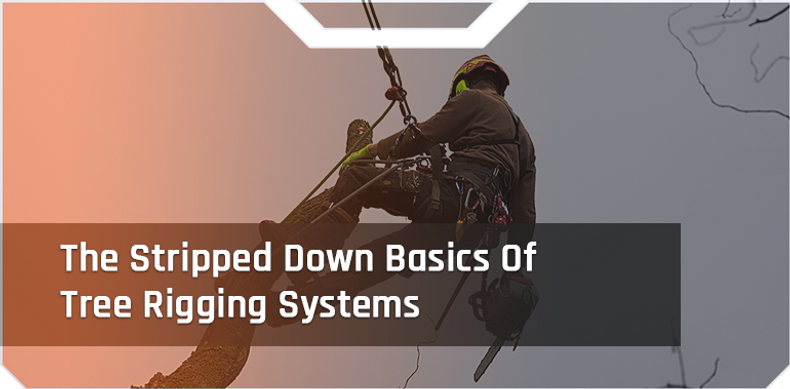The sun is out today and we are preparing to end another week here in beautiful Southern California. We notice that when the nice weather comes out, we get more people reaching out about tree work.
We have talked a good amount on this blog about arboriculture and tree climbing, but perhaps we have neglected the subject of tree rigging. It might just be the perfect time to fix this issue.
Let’s talk about some of the basics of tree rigging techniques and then we are going to get on our way to enjoy the warm weather.
Negative Rigging & Negative Blocking
Negative Rigging is a technique where a load is dropped from above. If you are using a block, it is referred to as Negative Blocking. Negative Rigging is particularly useful when it would be difficult or impossible to install an anchor above the load. It allows for an anchor to be installed to any location on a stem.
Although Negative Rigging can be done with an X Ring, adding a block to this system can make this process more efficient. A block will also add some extra protection to the rope and provide a better distribution of force.
When using this technique, a whoopie sling may be helpful. You should also avoid creating friction between your climbing line and rigging line in any way possible. It requires a lot of vigilance as limbs will be free falling.
High Line Rigging
If you are moving low branches, a High Line Rigging Technique may be the best strategy to get the job done. This is a slower process, but allows for more control, especially if these low branches are near fences or other obstacles.
If you are looking to add a little more tension in this technique, you can try using a winch line.
Advantages Of High Line Rigging:
- Reduces Damage To Gear
- Creates A Better Mechanical Advantage
- Great For Moving Low Branches Around Fences
- Allows To Control Limbs Without The Free Fall Presented By Negative Rigging
Speed Line Rigging, Slide Line Rigging, And Targeted Slide Lining
The fastest way to get a tree rigging job done is by using a Slide Lining Technique. Appropriately, this is also referred to as Speed Line Rigging. Loads are moved on more of a vertical slope, using gravity and tension to your advantage.
Not only are limbs moved efficiently and easily around obstacles, but this technique also allows for a groundsman to quickly remove limbs from a line at a drop zone. The term TSL, or Targeted Slide Lining, refers to moving a load to a designated dropzone with a Slide Lining Technique.
Advantages Of Speed Lining:
- Allows Limbs To Be Transferred Very Quickly
- Limbs Are Easily Moved Around Most Obstacles
- Limbs Can Be Removed From A Line Quickly In A Dropzone
Some Tips For Speed Lining
Port-a-wraps can be very useful in TSL applications, but you also can use a Figure 8 or a Prusik. This technique does present some dangers in that the loads get sent swinging down to the ground very quickly, so it should be avoided in areas where pedestrians may be walking close to the job.
Time To Pack Up
Now that we have dropped some Arborist Knowledge on you, it is time for us to get going and catch some sunshine while there is still some time. Hopefully this guide gave you a bit of a better understanding of some Tree Rigging basics. We suggest you also go outside and check out some trees.
While you look at those branches, just imagine removing them and letting them drop into a Targeted Dropzone. It doesn’t get much better than that, does it?





